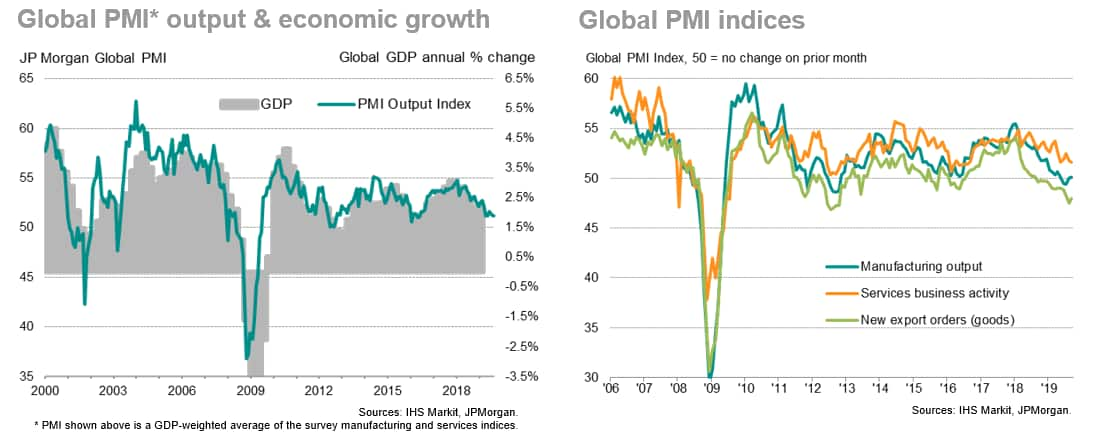Global growth at three-year low as weakness spills over to services
The following is an extract from IHS Markit's monthly PMI overview presentation. For the full report please click on the link at the bottom of the article.
Latest worldwide PMI data showed the global economy losing growth momentum again in September, registering the joint-weakest increase in output for three years. At 51.2 in September, the JPMorgan Global PMI™ (compiled by IHS Markit) fell to a level matching the lows seen back in May and June. Inflows of new orders expanded at the slowest pace since 2012 and business expectations about the year ahead remained close to a survey low. Trade worries continued to dominate the outlook, alongside heightened uncertainty and concerns of weaker economic growth.
Global exports continued to fall at a steep pace and manufacturing activity remained more or less stagnate, albeit showing some signs of the slowdown easing. However, key to the recent weakening of global conditions has been a further spill-over of the trade-led slowdown from manufacturing to services, with growth in the latter now running at its joint-lowest for three years.

Chris Williamson, Chief Business Economist, IHS Markit
Tel: +44 207 260 2329
chris.williamson@ihsmarkit.com
© 2019, IHS Markit Inc. All rights reserved. Reproduction in whole or in part without permission is prohibited.
Purchasing Managers' Index™ (PMI™) data are compiled by IHS Markit for more than 40 economies worldwide. The monthly data are derived from surveys of senior executives at private sector companies, and are available only via subscription. The PMI dataset features a headline number, which indicates the overall health of an economy, and sub-indices, which provide insights into other key economic drivers such as GDP, inflation, exports, capacity utilization, employment and inventories. The PMI data are used by financial and corporate professionals to better understand where economies and markets are headed, and to uncover opportunities.
This article was published by S&P Global Market Intelligence and not by S&P Global Ratings, which is a separately managed division of S&P Global.
